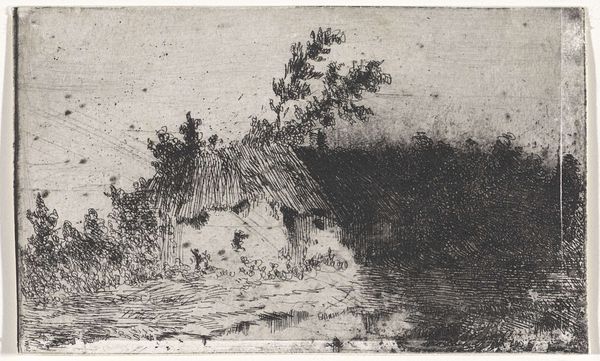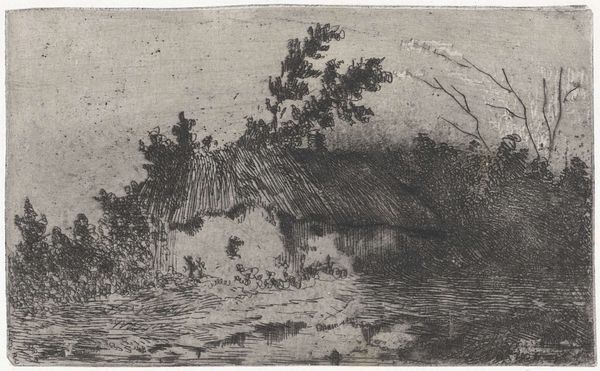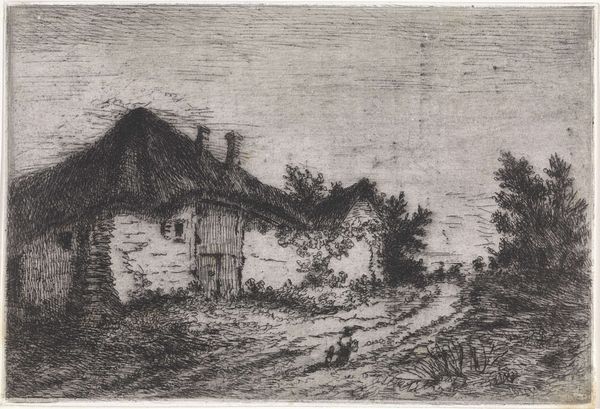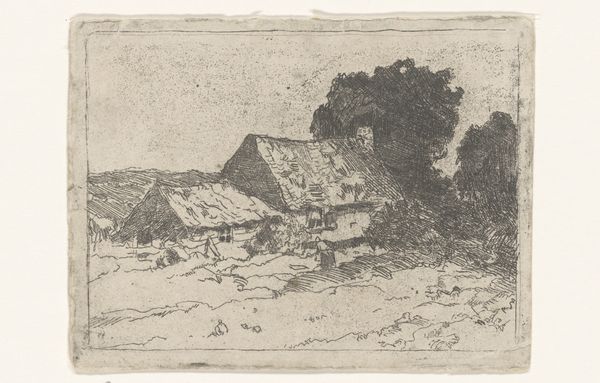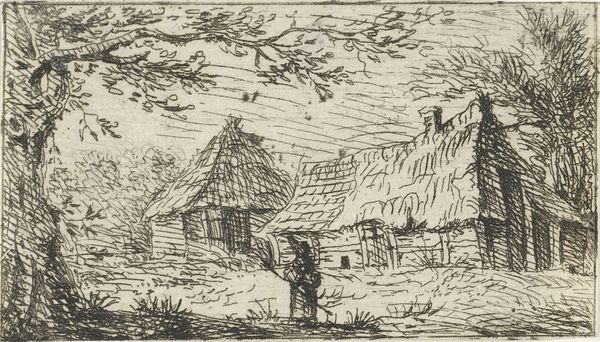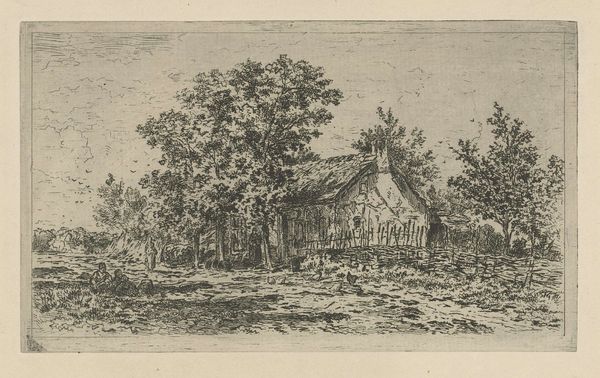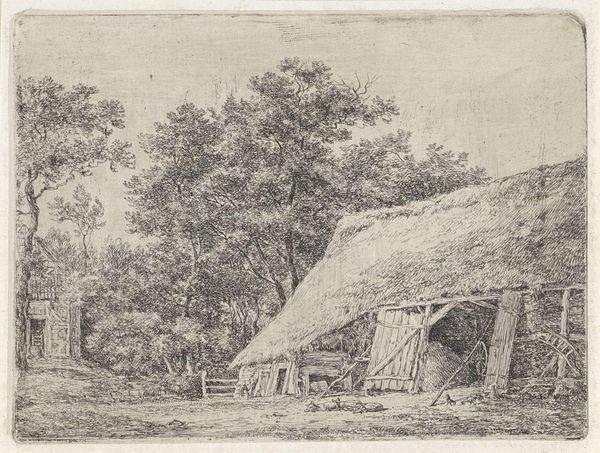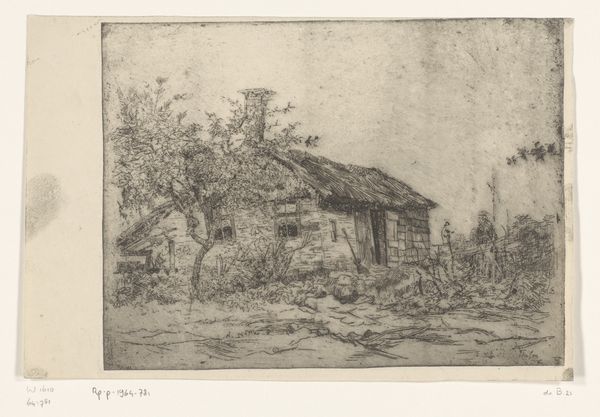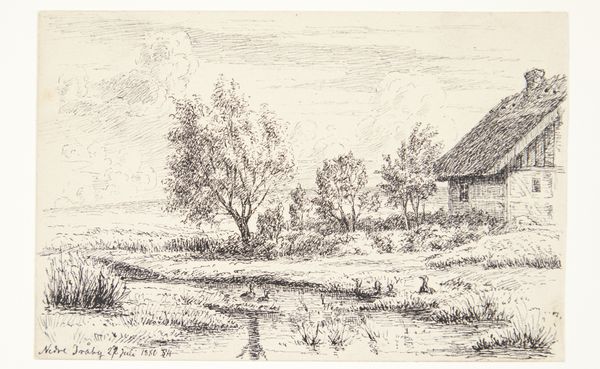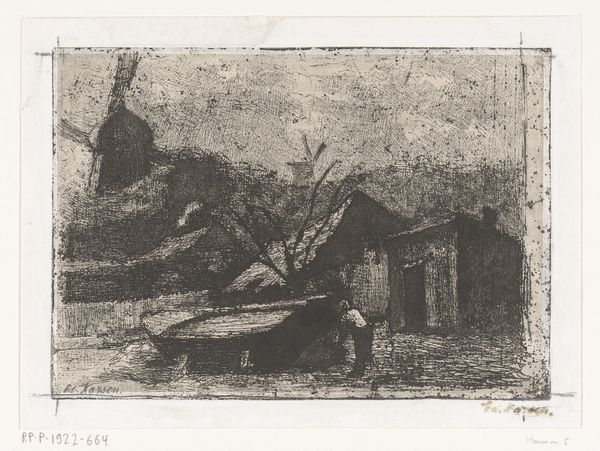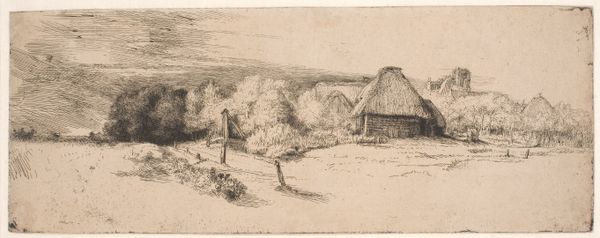
drawing, print, etching, ink
#
drawing
# print
#
etching
#
landscape
#
ink
Dimensions: height 78 mm, width 128 mm
Copyright: Rijks Museum: Open Domain
Curator: Before us we have "Hut met rieten dak," or "Hut with a thatched roof," a landscape rendered in ink, etching, drawing, and printmaking, dating from 1831 to 1904, by Arnoud Schaepkens. What's your initial reaction to it? Editor: Bleak. The contrast is striking; there are hardly any mid-tones, so we have these stark black lines that define a very solitary and, frankly, rather dismal-looking dwelling. It speaks volumes about the social conditions of the time; these were likely very difficult lives for those who occupied such dwellings. Curator: The etching technique certainly contributes to the starkness. Notice the density and directionality of the lines used to create form and shadow. The thatching on the roof, for instance, is described with incredibly precise, parallel strokes. Also, the tree almost merges into the building creating visual unity in their similar linear designs. Editor: It's not merely about skillful representation. The way the hut almost melts into its surroundings can be interpreted as the limited access and marginalization experienced by those who resided here; blending with the environment could mean invisibility within the social hierarchy. Curator: A valid point. However, from a formal perspective, it might simply be an aesthetic choice. The artist may have aimed to harmonize architecture with nature. Look at how the reflections in the water mirror the rough texture of the foliage, creating visual echoes. Editor: Perhaps, but I think there's also the narrative. I am drawn to what these stark contrasts convey in regards to access. Did it reflect something larger about land rights or ownership patterns within 19th-century society? Where was this even located? Curator: Unfortunately, its exact original location is unrecorded. Its power is indeed its evocative use of line and form. Schaepkens’s choice of monochromatic palette, the stark contrast, allows the composition to speak clearly and directly. Editor: Precisely. And that directness, for me, underscores a rawness about life that art often softens, bringing viewers in to connect and also grapple with discomforts. Curator: True. Ultimately, "Hut met rieten dak" invites viewers to contemplate both the technical artistry and its complex historical and societal interpretations. Editor: It is an illustration and, at the same time, an illumination of complex power relations.
Comments
No comments
Be the first to comment and join the conversation on the ultimate creative platform.
